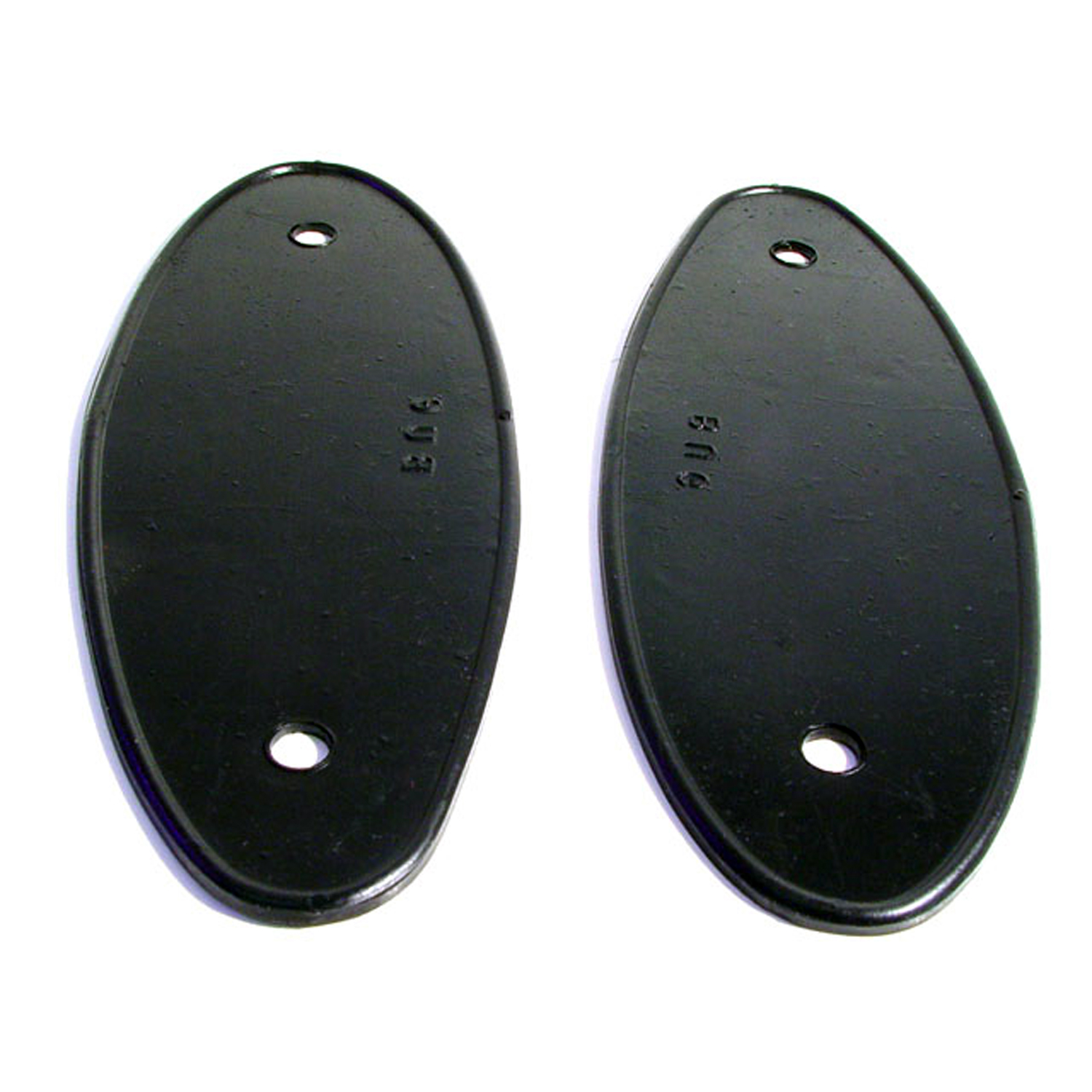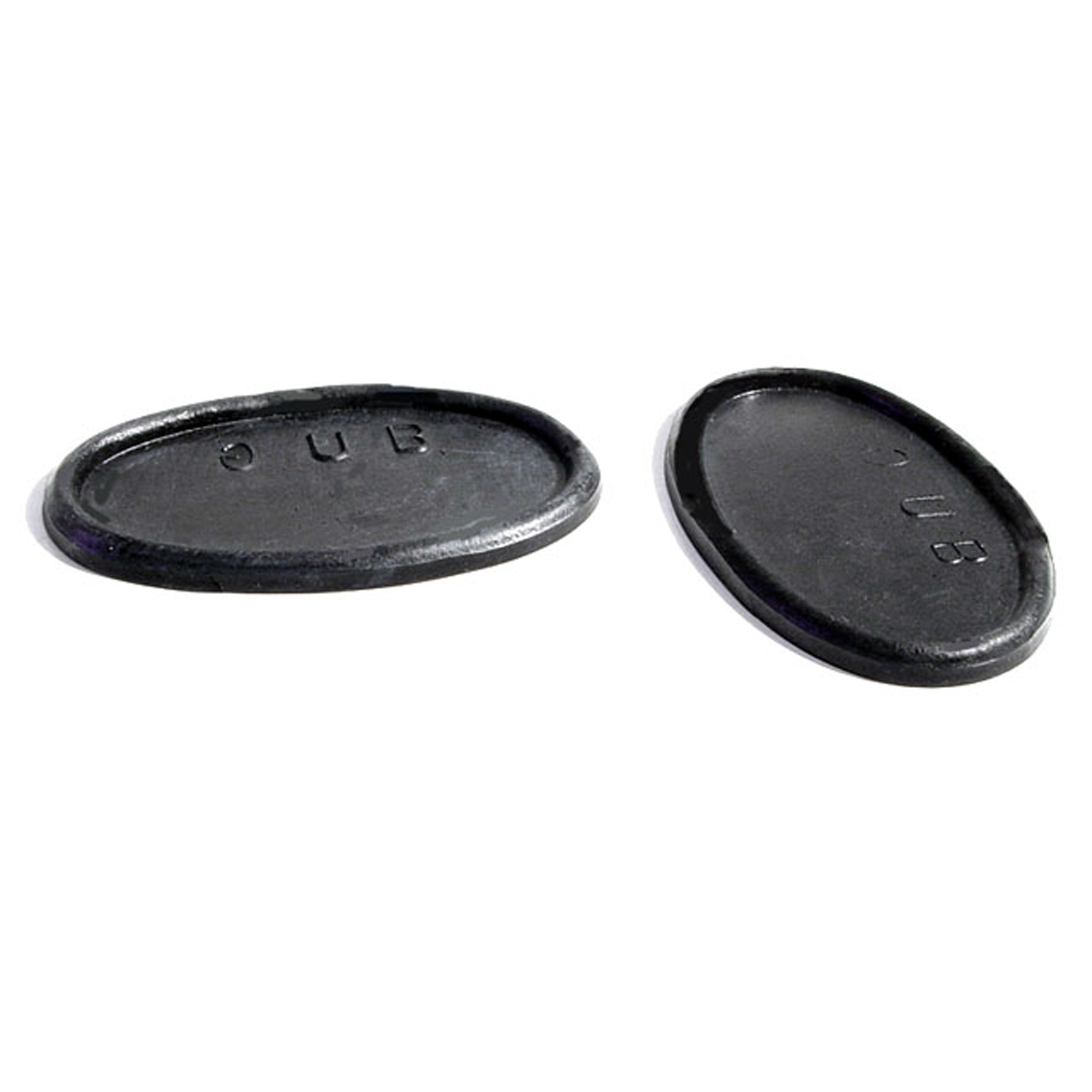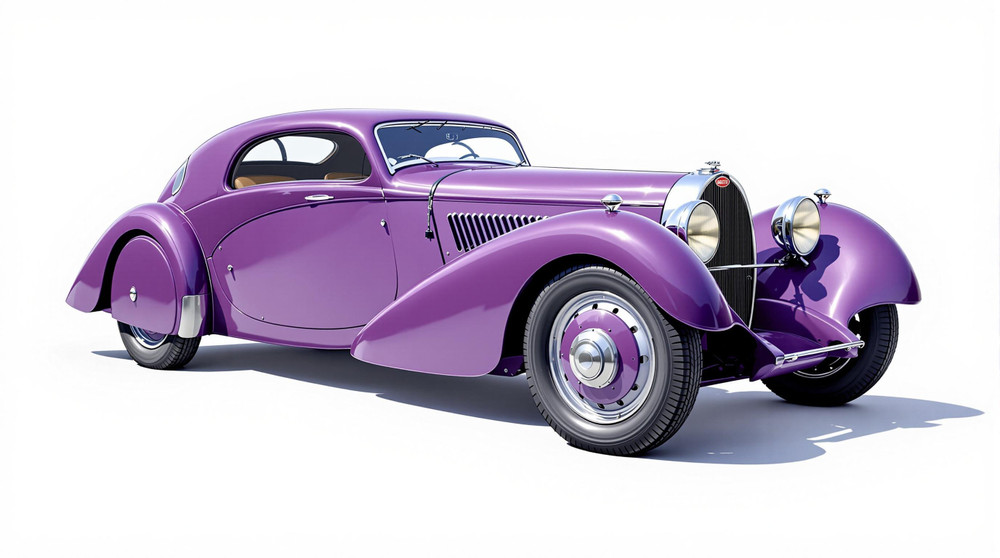Image of 1932 Bugatti Type 50, Note: These illustrations use artistic license and may differ from actual historical models.
Performance Metrics
Fundamental Metrics
Emotional Appeal
MMP Rating
| Engine Specifications | |
|---|---|
| Engine: | Straight 8 |
| Displacement: | 4972 cc |
| Horsepower: | Estimated 200 HP |
| Torque: | Not available |
| Compression Ratio: | Not available |
| Ignition System: | Dual Ignition with two spark plugs per cylinder |
| Cooling System: | Water-cooled |
| Performance Specifications | |
| 0-60 Time: | Not available |
| 1/4 Mile Time: | Not available |
| Top Speed: | 100 mph |
| Transmission and Drive | |
| Drive Type: | Rear-wheel drive |
| Transmission Type: | 4-speed manual |
| Fuel and Efficiency | |
| Fuel System Type: | Twin Zenith Carburetors |
| MPG: | Not available |
| Dimensions and Brakes | |
| Brakes: | Mechanical drum brakes |
| Wheelbase: | 130 inches |
| Weight: | Estimated 2300 lbs |
Note: Specifications for classic cars are given to the best of our ability, considering the limited and variant data available.
The 1932 Bugatti Type 50: A Testament to Automotive Elegance and Engineering
The year 1932 witnessed the birth of a legend in the automotive world, the Bugatti Type 50. This masterpiece emerged from the esteemed French manufacturer Bugatti, known for crafting vehicles that blend art and engineering. The Type 50 was no exception, boasting a lineage that traced back to the luxurious and high-performance standards set by its predecessors. It stood out as a beacon of innovation during an era where automotive design was as much about aesthetics as it was about speed and power.
One of the most captivating aspects of the Type 50's history is its engine, which was inspired by an American Miller racing car that Ettore Bugatti had admired. This influence led to the creation of a twin-cam engine, a rarity at that time, which became a significant hallmark of the Type 50.
Design and Innovation: A Fusion of Form and Function
The exterior of the Bugatti Type 50 was a visual symphony of flowing lines and elegant proportions. Its long bonnet housed the powerful engine, while the bodywork featured a graceful blend of curves and straight edges, culminating in a distinctive tail design. The craftsmanship extended to its interior, where luxury materials such as fine leather and polished wood were standard, reflecting Bugatti's commitment to comfort without compromising performance.
Technologically, the Type 50 was ahead of its time. The aforementioned twin-cam engine was not only innovative but also delivered exceptional power output for its era. Color options were typically rich and deep, with hues that accentuated the car's sophisticated lines. Among these, French Blue became synonymous with Bugatti's racing heritage.
The Type 50 came in various body styles including roadsters and coupes, but it was perhaps the coach-built versions by renowned designers like Jean Bugatti that became most iconic, showcasing bespoke elegance.
Historical Significance: Shaping Automotive Destiny
The Bugatti Type 50 played a pivotal role in automotive history by setting new benchmarks in luxury sports car design. Its advanced engine technology influenced future generations of high-performance engines. The car's blend of speed, style, and luxury set it apart from its contemporaries and left an indelible mark on automotive design philosophies that followed.
Performance and Handling: The Thrill of Vintage Speed
Performance-wise, the Type 50's engine propelled it to impressive speeds for its time, with top speeds reaching around 100 mph—a remarkable feat in the early '30s. Acceleration was brisk too; though exact figures for 0-60 mph are scarce due to the period's testing limitations. Handling characteristics were praised for their precision and responsiveness, despite the challenges posed by less sophisticated suspension systems compared to modern standards.
Driving a Type 50 is described as an immersive experience; from the throaty roar of its engine to the tactile feedback through its steering wheel—it connected drivers intimately with the road.
Ownership Experience: Beyond Driving
Originally intended for affluent buyers who appreciated both luxury touring and spirited driving, ownership of a Type 50 today is akin to possessing a piece of automotive aristocracy. Maintenance requires specialized knowledge due to its age and unique mechanical components; however, reliability is considered robust for a pre-war classic when properly cared for.
Fun Facts: The Lore of Bugatti's Jewel
The Type 50 has graced many prestigious collections over time, including those of celebrities and royalty. While production numbers are uncertain due to historical record discrepancies, it's estimated that less than 100 units were built. This rarity adds to its allure among collectors.
Collector's Information: Valuing Rarity
As with many pre-war classics, pinpointing an exact value range for a Type 50 can be challenging due to their scarcity and individual history. However, given their rarity and significance in automotive history, values are generally well into seven figures with appreciation likely as they become even more sought after by collectors worldwide.
Conclusion: The Enduring Legacy of Bugatti's Masterpiece
The 1932 Bugatti Type 50 stands as a testament to an era where automobiles transcended mere transportation to become works of art on wheels. Its combination of design excellence, technological innovation, and thrilling performance ensures its place in automotive lore—a true classic that continues to captivate enthusiasts nearly a century after it first graced the world's roads.
1932 Bugatti Type 50 Catalog of Parts
 1932 Bugatti Type 50 Headlight Pads. 3" wide X 8-1/8" long. Pair-MP 337-AHeadlight Pads. 3" wide X 8-1/8" long. Pair
1932 Bugatti Type 50 Headlight Pads. 3" wide X 8-1/8" long. Pair-MP 337-AHeadlight Pads. 3" wide X 8-1/8" long. Pair 1932 Bugatti Type 50 Door Handle Pads. 1-3/8" wide X 2-1/4" long. Pair-MP 337-BDoor Handle Pads. 1-3/8" wide X 2-1/4" long. Pair
1932 Bugatti Type 50 Door Handle Pads. 1-3/8" wide X 2-1/4" long. Pair-MP 337-BDoor Handle Pads. 1-3/8" wide X 2-1/4" long. PairWhy Choose Metro?
For over 100 years, Metro Moulded Parts has been the pinnacle of quality in classic car restoration parts. Our commitment to precision and authenticity in every component ensures a perfect fit and an OEM-level appearance.
- Expert Craftsmanship & Quality: Each part is a testament to our dedication to reliability and perfection, crafted from original designs and thoroughly tested.
- Advanced Technology: We use cutting-edge techniques to create flawless, long-lasting parts that surpass others in performance.
- SuperSoft Sponge – The Ultimate Door Seal: Not only are our door seals 30% softer than competitors', but they're also guaranteed to never leak. They effectively reduce wind and road noise, enhancing your classic car's comfort and driving experience.
- Proudly American: Our parts are a product of American craftsmanship, made in the USA with a spirit of excellence and heritage.
- Unrivaled Warranty: We back our products with a 30-year industry-leading warranty, a testament to our confidence in their quality.
Join us in preserving the legacy of classic cars with parts that are crafted for perfection, not just made.

